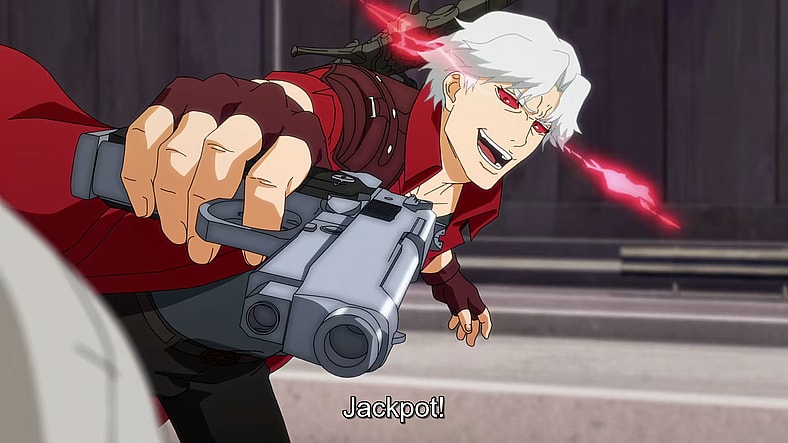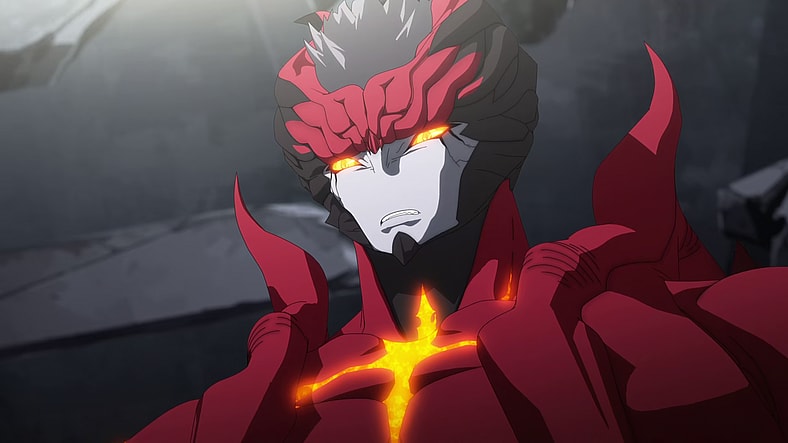Netflix’s ‘Devil May Cry’ Producer Says His Goal Was To Capture “The Essence” Of Series’ Characters Rather Than “The Experience Of Playing The Games”

According to producer Adi Shankar, the fact that Netflix’s Devil May Cry is so wildly off-base from its source material is that is a feature not a bug of his creative process, as instead of adapting “the experience” of the original games, he instead chose to focus his efforts on “the essence” of the series’ various characters.

By now, most readers, in particular those who are actually established fans of Capcom’s demon-flavored character-action franchise, will have caught wind of the tonal disaster that is its new animated adaptation – but in case you haven’t, let’s just say that Shankar’s take on Dante’s story completely misunderstands its source material.
From depicting Dante as an attention-seeking ‘Deadpool-lite’ instead of an aloof warrior whose ‘goofiness’ is the result of him trying to entertain himself whilst slaughtering wave after wave of cannon fodder, to turning Lady from a genuinely interesting character into a generic ‘strong female’ stereotype whose every third word is a swear, to using the concept of Hell and Demons as a metaphor for America’s War on Terror, Netflix’s Devil May Cry is a textbook example of what happens when someone who has only a surface, aesthetic-level understanding of a given IP is allowed full creative control over its adaptation to another medium.

And let’s not even get into the fact that Shankar gave the ‘Devil Trigger’ theme song, as originally created for the character Nero in Devil May Cry V and whose lyrics are reflective of his inner-struggle with accepting his Sparda lineage, to Dante (ostensibly after a thought process that went no deeper than ‘Hey, Dante’s using his Devil Trigger, why don’t we give him the song with the name Devil Trigger?’).
In other words, Shankar’s Dante more closely resembles the version seen in the ‘bing bing wacky woohoo pizza man‘ memes than the flippant-but-dedicated defender of humanity that players actually control throughout the original video game series.

While the reasons for this discrepancy between the two versions of the Son of Sparda are likely equal-parts lengthy and disappointing, it seems that at least one piece of this disastrous puzzle lies in the fact that Shankar, per his own admission, willingly side-stepped the overall spirit of the games in favor of focusing on the “essence” of the characters themselves.
Speaking to the series’ production during a recent Devil May Cry-centric interview with Animation World‘s Victoria Davis, the series producer explained, “As a fan of the original games, I knew these characters were iconic for a reason, I wanted to explore them in the youngest versions of these characters we’ve ever seen. But, at the same time, I didn’t want to alter them to the point where they were completely unrecognizable.”

“I wanted to do for Dante what [The Dark Knight trilogy director] Christopher Nolan did for Batman,” he continued. “I wanted to take this game character and drop him in the real world. I approached it as an early 2000s summer blockbuster, like The Matrix, I, Robot and Bad Boys, which do have these over-the-top action sequences. But it wasn’t that much about capturing the experience of playing games as it was capturing the characters and the essence of those characters.”

In light of Shakar’s insight, one might be quick to lambast the creative mind behind Castlevania and Castlevania: Nocturne for ultimately failing to adhere to not only his stated goal of doing right by the Devil May Cry cast themselves, but also his previous claim that “fidelity to the original spirit of the IP guides every creative decision”, it should be noted that thanks to a bit of obfuscating wordplay on his end, he did actually follow through on both fronts.
Note how rather than simply saying he wanted to capture the characters as they have already been established or sought to do justice to the actual series canon, Shankar instead dedicates himself to “the spirit” of the IP and “the essence” of the characters.

By framing his assertions in this manner, the producer allows himself enough wiggle room to say that he never promised a 1:1 adaptation, thus allowing him a technical carte blanche to defend the Netflix series on the grounds that it’s simply ‘his interpretation’ of Devil May Cry‘s identity.
For those wishing to see just how big the difference is between Shankar’s Dante and the canon Demon Hunter himself, all eight episodes of the Devil May Cry animated series’ first season is now streaming on Netflix.

